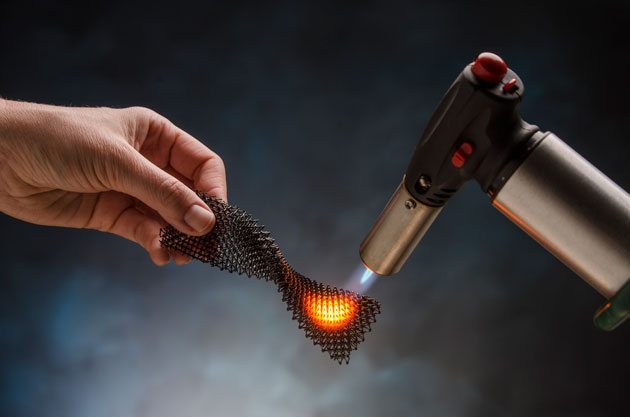As reported earlier, 3D printing for Aerospace has taken another step forward this week. Now new research into ceramics brings hypersonic flight closer.
The production of the LEAP and GEnx series engines combine 3D printing with several other advanced manufacturing techniques. In addition to the 3D woven carbon fiber composite fan blades and the titanium aluminide blades in the LEAP-1C’s low pressure turbine, ceramic matrix composite (CMC) shrouds are used in the high-pressure (aka the hot part) turbine.
Ceramics were selected as a material for this extreme environment as they are able to resist significant temperatures and it is in this area where the hottest temperatures are found. By running the engine at a high temperature greater efficiency is possible.
Tantalum carbide and hafnium carbide
Now a research team from Imperial College London have established the highest ever melting point for a refractory ceramic, at 4000 degrees Celsius. It is hoped that the research will lead to progress in hypersonic flight, a category where velocity is in excess of Mach 5 or 3,836 mph (6174 kph).

The scientists used a new heating technique to determine that tantalum carbide and hafnium carbide could be heated to such a high temperature, the results of the study are published in the academic journal Scientific Reports.
Hypersonic vehicles are equipped with sharp nose tips and leading edges to maximize flight performance. However, very high temperatures and heating rates are produced at these surfaces due to extreme velocities (>5 Mach). Thermal protection structures are required that can operate in air at temperatures that can exceed 2200 K, thus components are required to have very high melting temperatures.
3DPI also took at a detailed look at how other technology such as rapid plasma deposition is used in the aerospace industry in other advanced projects.
Ultra-high temperature ceramics
These extreme conditions call for ultra-high temperature ceramics (UHTCs). As we reported at the start of the year, HRL are developing a pre-ceramic resin for 3D printing that can be used as part of the SLA process to create complex shapes not possible with other techniques.

Speaking at the time of the HRL announcement Stefanie Tompkins, the director of the Defense Science Office at the Defense Advanced Research Projects Agency (DARPA) said, “This brings us closer to the goal of being able to ‘engineer in’ desired material properties that generally are not found together, such as strength and low density or low weight, and to craft these materials into complex shapes,”director of the Defense Science Office at the Defense Advanced Research Projects Agency (DARPA).
Activity in the Aerospace sector has historically been where many innovations and inventions for 3D printing are seen. Are any of the applications mentioned in this article impressive enough to warrant a 3D Printing Industry Award? Why not make your nomination by following this link.
Featured image shows a concept for a hypersonic scram jet. Image via U.S. Airforce



